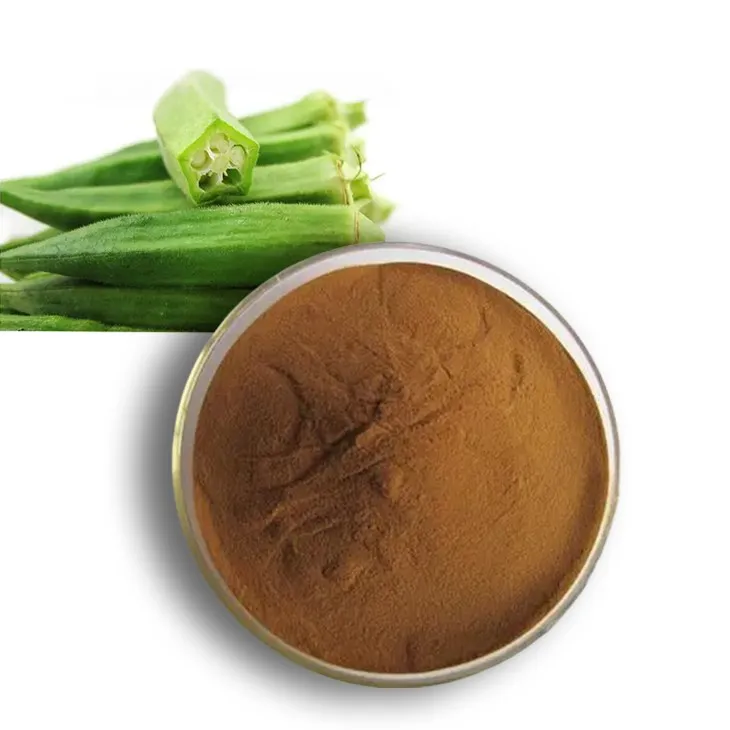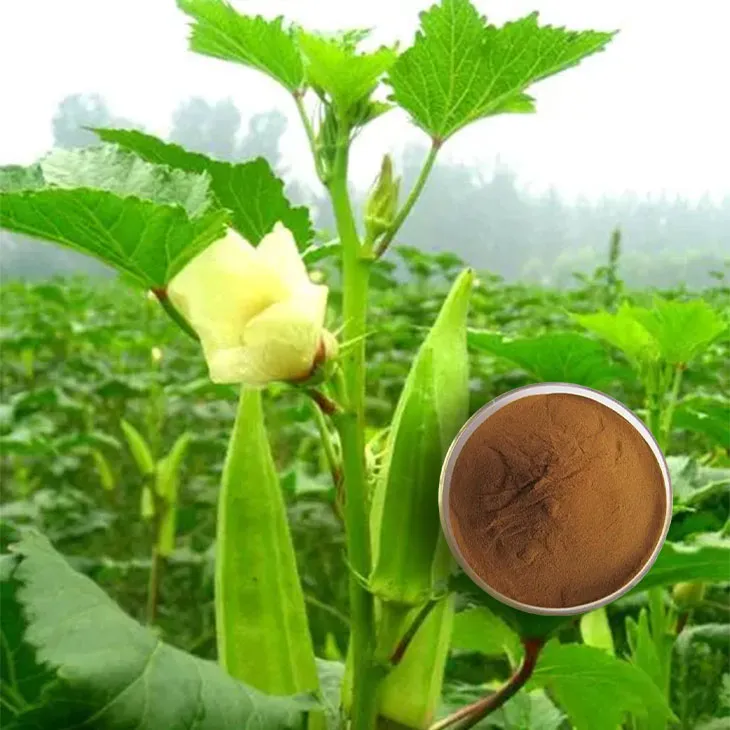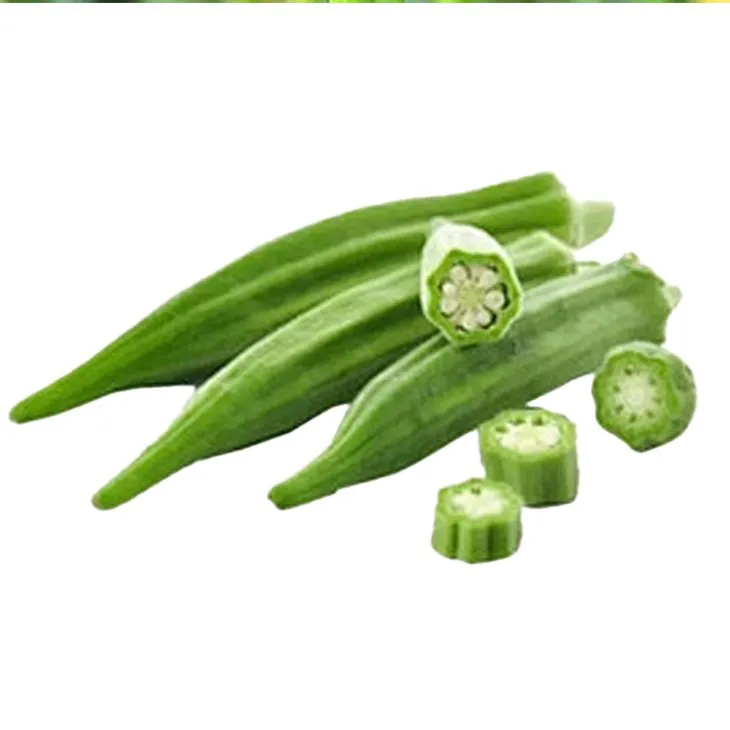- 0086-571-85302990
- sales@greenskybio.com
The process of extracting okra seed polyphenols from okra extract.
2024-11-26

1. Introduction
Okra, also known as Abelmoschus esculentus, is a plant that has been widely studied for its various beneficial components. Okra Extract is a valuable source from which okra seed polyphenols can be obtained. These polyphenols have attracted significant attention due to their potential health - promoting properties, such as antioxidant, anti - inflammatory, and anti - cancer activities. The extraction process of okra seed polyphenols from Okra Extract is a complex but interesting area of research.

2. Okra Collection and Pretreatment
2.1 Collection
The first step in the process of obtaining okra seed polyphenols from Okra Extract is the proper collection of okra. Okra should be harvested at the appropriate stage of maturity. Mature okra pods are typically preferred as they contain a higher amount of seeds and potentially more polyphenols. The collection should be done carefully to avoid damage to the pods.2.2 Pretreatment
Once the okra is collected, pretreatment is necessary. The pods are washed thoroughly to remove any dirt, debris, or pesticides. After washing, the pods are dried. Drying can be done in different ways, such as air - drying or using a low - temperature dryer. The dried okra pods are then crushed or ground into a fine powder. This powder serves as the starting material for the extraction of okra extract, which will further be used for polyphenol extraction.
3. Okra Extract Preparation
There are several methods for preparing okra extract. One common method is solvent extraction. In this method, a suitable solvent is used to extract the active components from the ground okra powder. Solvents such as ethanol, methanol, or water can be used. For example, ethanol - water mixtures are often preferred as they can effectively extract a wide range of compounds from okra. The extraction is usually carried out at a specific temperature and for a certain period of time. Another method for okra extract preparation is supercritical fluid extraction. However, this method requires more specialized equipment and is relatively more expensive compared to solvent extraction. But it has the advantage of producing a cleaner extract with fewer impurities.

4. Polyphenol Extraction from Okra Extract
4.1 Solvent - based Extraction
Solvent - based extraction is one of the most commonly used methods for extracting okra seed polyphenols from okra extract.- The choice of solvent is crucial. Different solvents have different affinities for polyphenols. Ethanol, for instance, is a popular solvent due to its ability to dissolve polyphenols effectively while being relatively safe and easy to handle. The concentration of the solvent also matters. A higher solvent concentration may lead to a more efficient extraction, but it may also extract more unwanted compounds.
- Extraction time is another important factor. Longer extraction times may increase the yield of polyphenols, but it may also increase the extraction of other substances. Generally, extraction times can range from a few hours to several days, depending on the experimental conditions.
- Temperature also plays a significant role. Higher temperatures can usually accelerate the extraction process, but excessive heat may cause the degradation of polyphenols. Therefore, an optimal temperature range needs to be determined, typically between 20 - 60 °C.
4.2 Other Extraction Methods
In addition to solvent - based extraction, there are other methods that can be explored for okra seed polyphenol extraction.- Ultrasound - assisted extraction is an emerging technique. Ultrasound waves can create cavitation bubbles in the solvent - okra extract mixture. When these bubbles collapse, they generate high - pressure and high - temperature micro - environments that can enhance the extraction efficiency of polyphenols. This method can significantly reduce the extraction time compared to traditional solvent extraction.
- Enzyme - assisted extraction is another option. Enzymes can break down the cell walls of okra seeds more effectively, making the polyphenols more accessible for extraction. However, this method requires the selection of appropriate enzymes and optimization of enzyme reaction conditions.
5. Refinement of Extracted Polyphenols
After the extraction process, the obtained polyphenol - containing extract is usually not pure enough for direct use. Therefore, refinement steps are necessary to eliminate impurities.
- Filtration is a simple and common method. By using a filter with an appropriate pore size, large particles and insoluble substances can be removed from the extract.
- Centrifugation can also be used. Centrifugal force can separate the heavier impurities from the polyphenol - rich supernatant.
- Chromatographic techniques, such as column chromatography or high - performance liquid chromatography (HPLC), can be applied for further purification. These techniques can separate polyphenols from other closely related compounds based on their different affinities for the stationary and mobile phases.
6. Characterization and Analysis of Okra Seed Polyphenols
Once the okra seed polyphenols are refined, it is important to characterize and analyze them.
- Chemical composition analysis can be carried out using techniques such as mass spectrometry (MS) and nuclear magnetic resonance (NMR). These techniques can help identify the specific types of polyphenols present in the extract, such as flavonoids, phenolic acids, etc.
- Antioxidant activity assays are also essential. These assays can measure the ability of okra seed polyphenols to scavenge free radicals. Common antioxidant assays include the DPPH (2,2 - diphenyl - 1 - picrylhydrazyl) assay, ABTS (2,2' - azinobis - (3 - ethylbenzothiazoline - 6 - sulfonic acid)) assay, etc. By comparing the antioxidant activity of the extracted polyphenols with known standards, the potential health benefits can be estimated.
7. Potential Applications of Okra Seed Polyphenols
7.1 In the Food Industry
Okra seed polyphenols can be used as natural antioxidants in food products. They can help prevent the oxidation of fats and oils, thereby extending the shelf life of food. For example, in the production of bakery products, the addition of okra seed polyphenols can reduce the rancidity of fats used in the dough. They can also be added to beverages, such as fruit juices or teas, to enhance their antioxidant content and potentially provide additional health benefits to consumers.7.2 In the Pharmaceutical Industry
Due to their antioxidant, anti - inflammatory, and other biological activities, okra seed polyphenols have potential applications in the pharmaceutical industry. They can be further studied for the development of drugs or nutraceuticals for the treatment or prevention of various diseases, such as cardiovascular diseases, diabetes, and cancer. For example, some polyphenols may have the ability to regulate blood sugar levels or reduce cholesterol levels in the body.7.3 In the Cosmetic Industry
Okra seed polyphenols can also be used in the cosmetic industry. Their antioxidant properties can help protect the skin from oxidative damage caused by environmental factors such as UV radiation and pollution. They can be incorporated into skin care products, such as creams, lotions, and serums, to improve skin health, reduce wrinkles, and enhance skin elasticity.8. Conclusion
The extraction of okra seed polyphenols from okra extract is a multi - step process that involves okra collection, pretreatment, okra extract preparation, polyphenol extraction, refinement, characterization, and analysis. Each step is crucial for obtaining high - quality okra seed polyphenols with potential applications in various industries. With the increasing demand for natural and health - promoting products, the study of okra seed polyphenols and their extraction process will continue to be an important area of research in the future.
FAQ:
What are the main solvents used in solvent - based extraction of okra seed polyphenols?
Common solvents include ethanol, methanol, and acetone. Ethanol is often preferred due to its relatively low toxicity and good solubility for polyphenols. Methanol can also effectively extract polyphenols but is more toxic. Acetone is sometimes used in combination with other solvents for better extraction efficiency.
How is the extraction time optimized during the extraction of okra seed polyphenols?
The optimization of extraction time is usually determined through experimental studies. Initially, a range of extraction times are tested, for example, from 1 hour to 10 hours. The polyphenol content in the extract is measured at different time points. As extraction progresses, the rate of polyphenol extraction may initially increase and then reach a plateau. The extraction time corresponding to the maximum polyphenol yield without significant degradation or excessive energy consumption is considered the optimal extraction time.
What are the key steps in the pretreatment of okra before extraction?
The key steps in pretreatment include cleaning to remove dirt and debris. Then, drying may be carried out to reduce the water content, which can affect the extraction efficiency. Sometimes, the okra may be ground or crushed into smaller particles to increase the surface area available for extraction.
Why are the antioxidant properties of okra seed polyphenols important?
The antioxidant properties of okra seed polyphenols are important because they can scavenge free radicals in the body. Free radicals can cause oxidative stress, which is associated with various diseases such as cancer, cardiovascular diseases, and neurodegenerative diseases. By neutralizing free radicals, polyphenols can help protect cells and tissues, maintain normal physiological functions, and potentially delay the aging process.
What are the common methods for eliminating impurities after the extraction of okra seed polyphenols?
Filtration is a common method to remove solid impurities. Centrifugation can also be used to separate the supernatant containing polyphenols from the insoluble materials. Additionally, chromatographic techniques such as column chromatography can be employed to further purify the polyphenols by separating them from other co - extracted compounds based on their different affinities to the stationary phase.
Related literature
- Okra Seed Polyphenols: A Comprehensive Review of Their Extraction and Bioactive Properties"
- "Optimization of Solvent - based Extraction of Polyphenols from Okra Seeds"
- "The Role of Okra Seed Polyphenols in Health and Disease Prevention"
- ▶ Hesperidin
- ▶ citrus bioflavonoids
- ▶ plant extract
- ▶ lycopene
- ▶ Diosmin
- ▶ Grape seed extract
- ▶ Sea buckthorn Juice Powder
- ▶ Beetroot powder
- ▶ Hops Extract
- ▶ Artichoke Extract
- ▶ Reishi mushroom extract
- ▶ Astaxanthin
- ▶ Green Tea Extract
- ▶ Curcumin Extract
- ▶ Horse Chestnut Extract
- ▶ Other Problems
- ▶ Boswellia Serrata Extract
- ▶ Resveratrol Extract
- ▶ Marigold Extract
- ▶ Grape Leaf Extract
- ▶ blog3
- ▶ blog4
-
The best natural source of diosmin.
2024-11-26
-
100% Pure Organic Hedyotis Diffusa Extract.
2024-11-26
-
How to make powder with baicalin?
2024-11-26
-
Standard - process ginseng root extract.
2024-11-26
-
How to make powder from marigold extract?
2024-11-26
-
Tormentil Extract
2024-11-26
-
Grape Seed Extract
2024-11-26
-
Hedyotis Diffusa Extract
2024-11-26
-
Citrus Aurantii Extract
2024-11-26
-
Ginseng Root Extract
2024-11-26
-
Kidney Bean Extract
2024-11-26
-
Mulberry leaf Extract
2024-11-26
-
Bitter Melon Extract
2024-11-26
-
Pine bark Extract Powder
2024-11-26
-
Hops Extract
2024-11-26





















